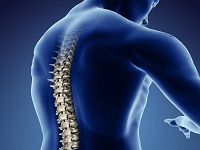Article
A New Paradigm for Chronic Cases of Low Back Pain
Author(s):
Research indicates that there are probable etiologies of low back pain that can affect treatment outcome and that ignoring pain can possibly cause chronic neurological changes.

The problem of low back pain (LBP) is nothing new. In fact, records have been found dating back over 5,000 years that describe different types of LBP and expected outcomes. Andrew Sukiennik, MD, a board-certified anesthesiologist and pain management physician at Winchester Hospital in Winchester, MA, shared an image and a translation of an ancient papyrus before he provided an up-to-date review of the etiology of LBP and a new paradigm for chronic cases at the 2014 American Academy of Pain Management annual clinical meeting in Phoenix, AZ.
The lifetime prevalence of LBP in the United States is between 65 and 80 percent, according to Sukiennik, and it results in an eight percent disability rate in the workforce each year. The direct cost of LBP in the United States is estimated to be $65 billion, with an estimated 80 to 90 percent of that cost attributed to a small portion, approximately 15 percent, of LBP patients (namely, those that require surgery).
Acute LBP can last up to seven weeks. First-line treatment includes non-steroidal anti-inflammatory (NSAIDs) drugs with muscle relaxers and low-impact exercises to encourage mobility. Short-acting opioids should not be used for more than a couple of days. Manipulative treatment can offer short-term relief.
While there is no specific test to confirm LBP, physicians should be on the lookout for red flag signs, especially in patients over 50 years of age. Red flag signs include a history of cancer, prolonged illness, failure to improve, weight loss, or fever. Chronic LBP is diagnosed after eight weeks, and Sukiennik said aggressive physical therapy is recommended at this time because the status of a patient at eight weeks is indicative of their status after 12 months. In both cases — red flag signs and failure to improve after eight weeks – a lab work-up and imaging studies should be completed. The most sensitive and specific imaging test for LBP is an MRI.
Currently, two models are used for thinking about chronic LBP. The first describes LBP as an “end-organ disease” or strictly caused by physical problems of the spine; the second conceptualizes LBP as “abnormal processing of nociception” or sensitization of the nervous system — also known as Central Sensitization Syndrome (CSS).
“In my opinion,” Sukiennik said, “these theories are not diametrically opposed to each other, but represent a continuum of low back pain involvement in a population that is variable in their social, psychological, and biological make-up.” Well-established risk factors for worse outcomes include duration and history of previous LBP, leg pain, BMI, work capacity (disability status), job satisfaction, education, fear, and depression. Sukiennik explained that an association between a single nucleotide polymorphism of the IL-1 gene and an increase in pain and loss of function has been reported, but he does not believe this to be clinically relevant at this time.
Current treatment of chronic LBP is focused on the spine and varies depending on the specific etiology. The most common cause is internal disc disruption, less common causes include z-joint and SI joint disruptions. Sukiennik developed the continuum paradigm when procedures that he expect to work and help patients did not help. “Early and frequent follow-ups are important and necessary,” Sukiennik concluded, “research indicates that there are probable etiologies that can affect outcome and that ignoring pain can possibly cause chronic neurological changes.”





